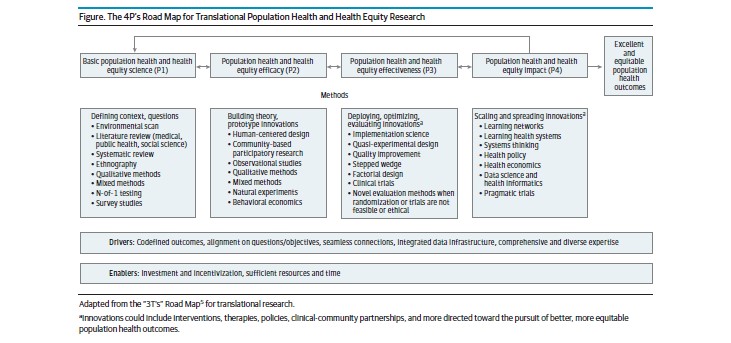How COVID-19 Reinforces Known Health Disparities
Post Date: November 24, 2020 | Publish Date:
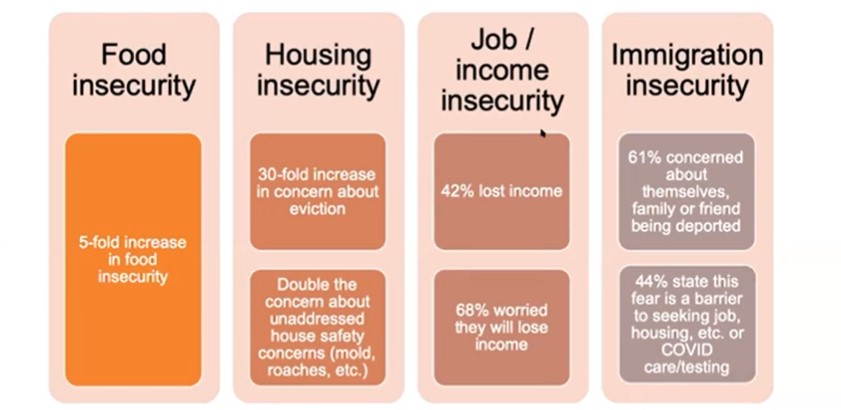
Several health experts from Cincinnati Children’s and the University of Cincinnati who have been exploring how to close health inequity gaps among people affected by COVID-19 in the Cincinnati region gathered Nov. 19 to provide a progress report on what they’ve learned so far.
The webinar was organized by the Center for Clinical and Translational Science and Training (CCTST), which also recently provided grants to launch targeted studies of populations affected by the pandemic.
Three of the key speakers represented Cincinnati Children’s. Here’s a recap of their presentations, with notes about when their presentations appear in the 2-hour webinar.
Minority Populations Hardest Hit

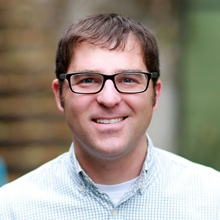
Andrew Beck, MD, MPH, provided an update (beginning at about 14 mins) on recent COVID statistics for our region and information about how COVID-19 intersects with known inequities.
“We know that initially, in the spring, COVID-19 disproportionately affected individuals of Black or African-American race and Hispanic or Latinx ethnicity in our city, county, and region,” Beck says. “What we also know is that, more recently, clusters of new cases are widespread, now affecting our suburbs and outlying counties at even higher rates than within the city. Still, the additional social and economic burdens of this pandemic continue to disproportionately those of minority race and ethnicity and those living with poverty.”
Click arrows to see more slides






Indeed, COVID-19 continues to magnify inequities that we have seen for some time, many of which reflect similar trends at the national level.
To help address these challenges, Cincinnati Children’s staff are asking screening questions during telehealth sessions, in-person clinic visits and hospital admissions to determine who needs COVID-related support.
Hospital staff have also been sending families home with bundles of supplies, including masks, hand sanitizer and other hygiene supplies. In addition, the medical center has partnered with the Freestore Foodbank to organize pop-up produce distribution, and with Legal Aid of Greater Cincinnati to help visitors who face housing and rent issues.
A core aspect of the outreach effort has been to work with trusted community sources to deliver culturally competent videos, infographics, and social media posts. Nearly all materials have been shared in English and Spanish with some also translated into Arabic and other languages.
Learn more about these efforts by following All Children Thrive.
Black residents face workplace issues and mask stigma
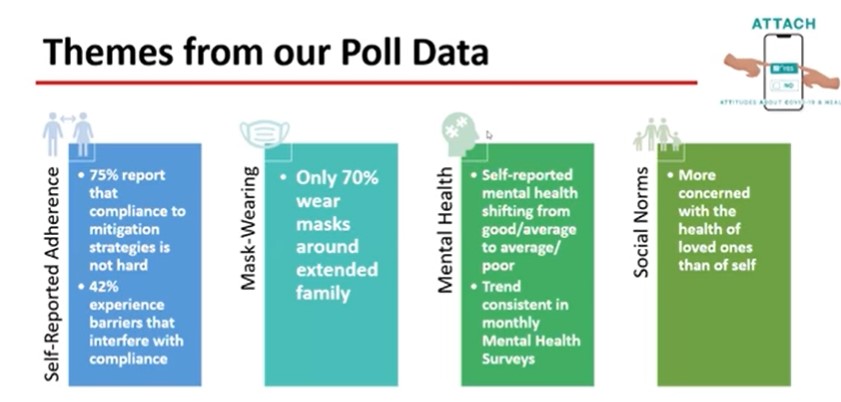
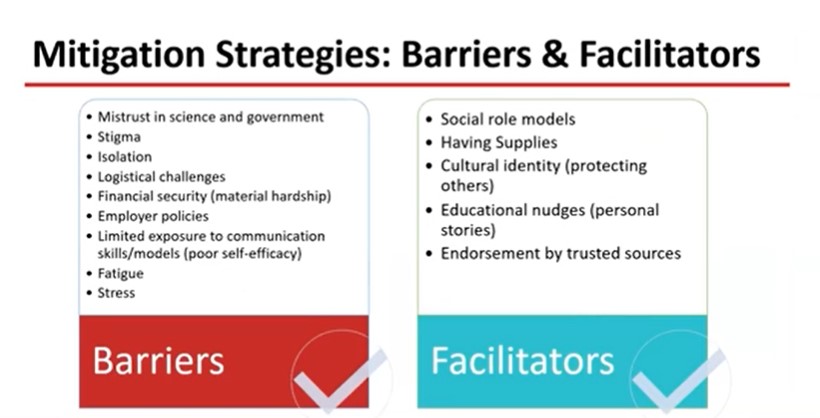
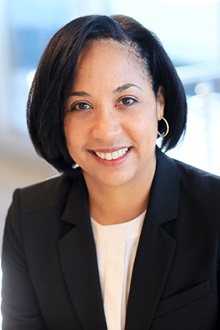
Lori Crosby, PsyD, presented data (starting at about 36 mins.) from the ATTACH project, which has enrolled more than 100 Black residents to respond to daily polls and monthly mental health surveys.
Among the findings so far: self-reported mental health has dropped from good/average to average/poor. Those surveyed expressed concerns about mistrust of the health system and beyond.
“Only 70% are wearing masks around extended family or friends, which is concerning given the numbers that Dr. Beck reported,” Crosby says.
“We also have uncovered some issues related to stigma. For example, we have learned that sometimes people feel very uncomfortable wearing a mask when they are in a situation when others are not because they feel like its sending a message to others that they might have COVID.”
“In addition there are some employer policies that are really interfering with people getting tested,” Crosby says. “They don’t feel like they can lose the income while they are getting tested and self-isolate, so they are having symptoms“and making the hard choice to not get tested.”
Employment concerns No. 1 for Latinx families
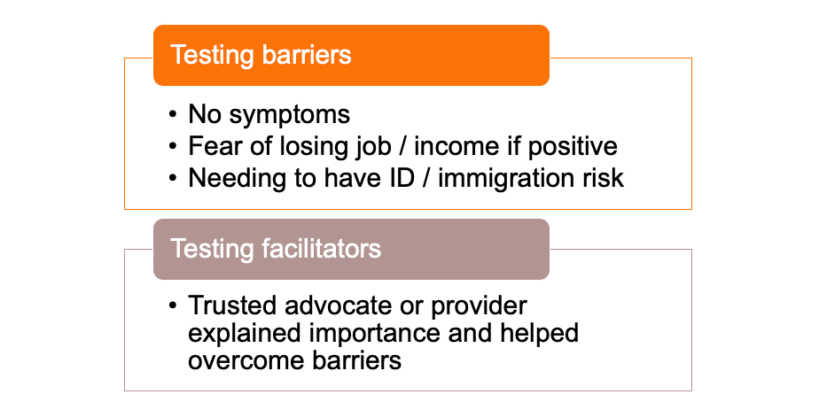
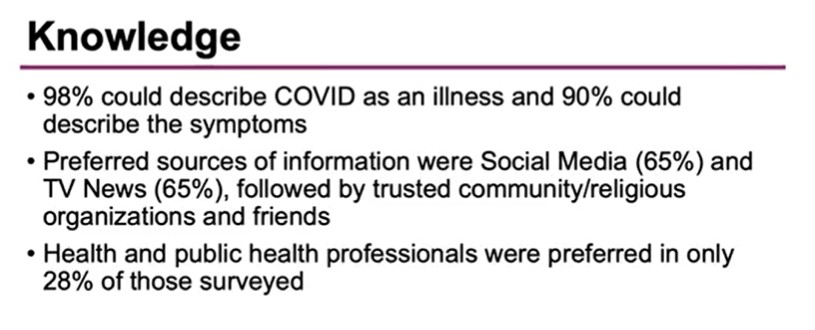

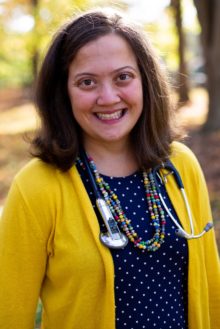
Amy Rule, MD, MPH, reported (starting at about 56 mins.) out on a survey project involving 275 Latinx people living in Cincinnati.
One concerning finding: 65% of respondents said they get their COVID news and info from social media and TV, while only 28% said their main sources of information were health professionals;
Another concern: While 99% say they wear masks in public on their own time, only 70% said they wear masks during work.
One survey respondent said: “So we see the need to go to work to be able to pay, most importantly rent. So that’s when we get infected and we infect other people, but we remain silent for the simple fact that we need to take money home, especially men.”
Rule stated that 42% of those surveyed said they have lost at least some income during COVID; 68% are afraid they will in coming months.
The fear of losing even two weeks of income has prevented Latinx families from seeking testing. Many say they cannot afford to take off from work to be tested, nor to self-isolate while waiting for results.
Rule also cited a 5-fold increase in self-reported food insecurity and a 30-fold increase in fear of eviction over inability to pay rent.
To address some of these concerns, Rule and colleagues have worked with the Health Collaborative to launch a bi-lingual digital campaign called “Test and Protect.”
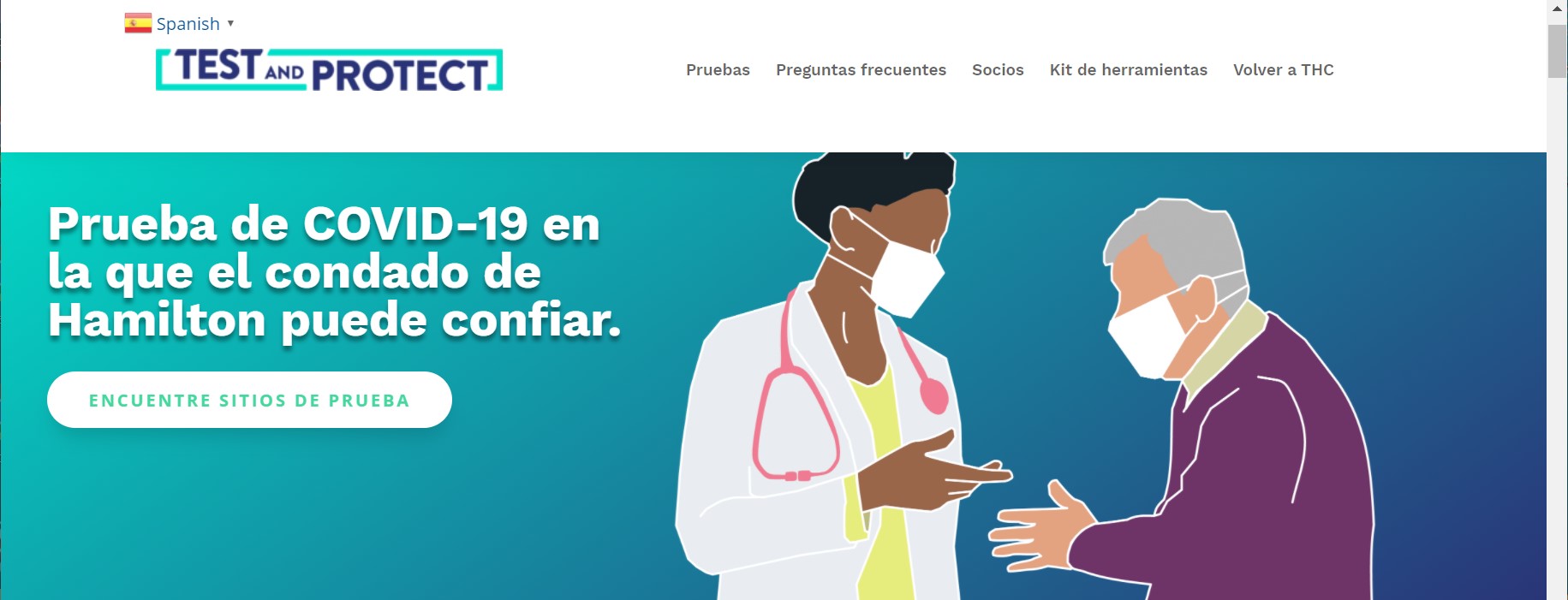
Looking ahead, multiple organizations are planning to launch an “Employment Empowerment Initiative” to emphasize mask-wearing in the workplace and encourage employers to provide paid time off for testing and quarantine.
To watch the entire webinar, click here. Make sure to download the file to watch the full video; if you watch in DropBox you will see only the first 15 minutes.


